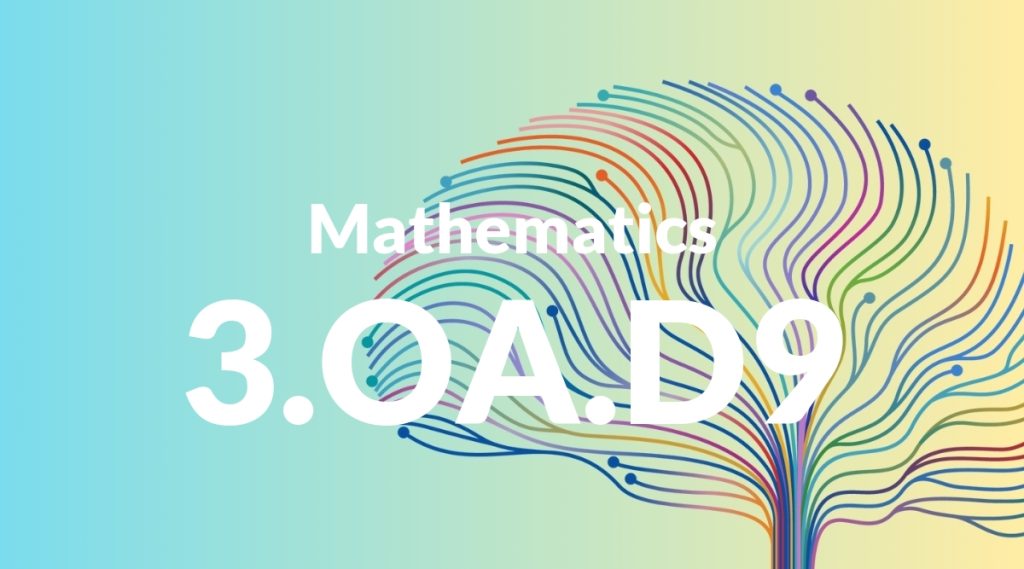Standard: 3.OA.D9 – Identify arithmetic patterns (including patterns in the addition table or multiplication table), and explain them using properties of operations. For example, observe that 4 times a number is always even, and explain why 4 times a number can be decomposed into two equal addends.
Grade level: Grade 3
Subject: Mathematics
Domain: Operations & Algebraic Thinking
Teacher Overview
This standard focuses on helping students identify and explain arithmetic patterns in addition and multiplication tables. Understanding these patterns is crucial as it lays the foundation for algebraic thinking and problem-solving in higher grades. Ensure that students have a solid grasp of basic arithmetic operations and the ability to distinguish between even and odd numbers.
Mastering this standard will enable students to recognize and use arithmetic patterns to solve more complex mathematical problems, preparing them for advanced topics in algebra and beyond.
Common Misconception 1
Some students may think that patterns in arithmetic tables are arbitrary. This misconception can hinder their ability to recognize and use these patterns effectively.
Intervention 1
Use concrete examples and visual aids to show how patterns are formed based on the properties of operations. Reinforce learning through hands-on activities.
Common Misconception 2
Another common misconception is that multiplying by 4 does not always result in an even number. This misunderstanding can be addressed with consistent practice and visual demonstrations.
Intervention 2
Provide numerous examples and use visual aids like number lines or arrays to demonstrate that multiplying by 4 always yields an even number.
Prerequisite Knowledge
Students should have a basic understanding of addition, subtraction, and multiplication. They should also be familiar with the concepts of even and odd numbers.
Subsequent Knowledge
Students will develop the ability to use arithmetic patterns to solve more complex problems, including multi-step word problems and algebraic thinking in higher grades.
Instructional Activities
- Use a multiplication table to highlight and discuss patterns.
- Create visual aids like charts or diagrams to show arithmetic patterns.
- Engage students in hands-on activities using manipulatives to explore and explain patterns.




